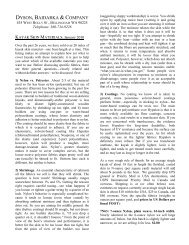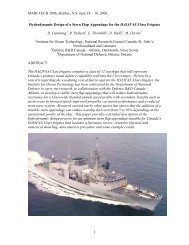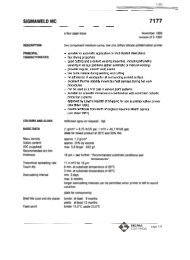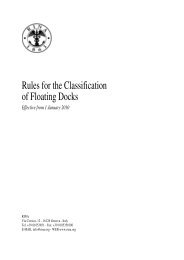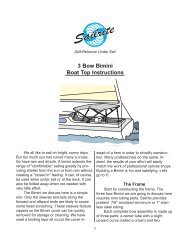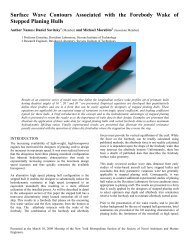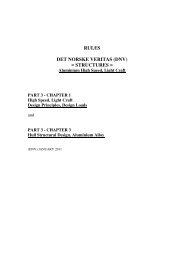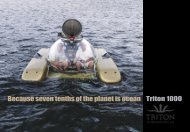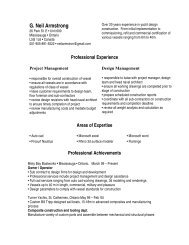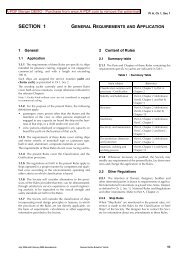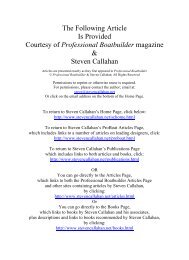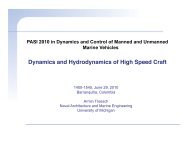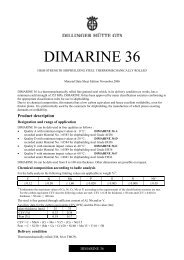Recent Applications of Hydrofoil-Supported- Catamarans - Boat ...
Recent Applications of Hydrofoil-Supported- Catamarans - Boat ...
Recent Applications of Hydrofoil-Supported- Catamarans - Boat ...
You also want an ePaper? Increase the reach of your titles
YUMPU automatically turns print PDFs into web optimized ePapers that Google loves.
5The avion type Hysucat foil system used, was developed by Pr<strong>of</strong>. K.G. Hoppe at theUniversity <strong>of</strong> Stellenbosch and contracted through Unistel Technologies, the UniversitiesTechnology Transfer company. The foil system was optimized by use <strong>of</strong> the numericalmodel, which had been validated in many previous applications, by use <strong>of</strong> physicalmodels and prototype sea-trial back feed data.It was therefore not necessary to perform tank testing on the Panther hull although it isusually strongly recommended. The main foil was built <strong>of</strong> high tensile stainless steel byMaitland Metal Fabricators, Cape Town. The stern foils were cast in aluminium bronzeand accurately machined and ground to a high quality surface finish. The foils wereshipped to the UK where they were installed on the Panther 64 after initial sea trialswithout the foils. This way the improvement due to the foil system could be determinedaccurately.It was a welcome procedure for the designer who had encountered strong disbelief inhis 40% performance improvement prediction. Without foils, the Panther 64 reached29 to 30 knots (occasionally) with a displacement <strong>of</strong> 32.5t in the initial sea trials over themeasured mile on the Thames estuary. A week later with foils fitted the Panther 64showed up with a top speed <strong>of</strong> 44 knots over the same mile and weight but includingthe foils (33.5t). Fully tanked and equipped it ran 42 knots with 35t.The average improvement in top speed, therefore, was in excess <strong>of</strong> 40%. No otherchanges had been made to the craft. Certain further speed improvements are stillfeasible when the underwater fittings such as water intakes and exits and echo sounderinstallation are adapted to the new top speed and are further streamlined. The generalhull finish can be further improved by use <strong>of</strong> smooth anti-fouling paints.In a previous publication in FAST FERRY International, see Hoppe (1991), aperformance comparison method <strong>of</strong> ships was developed which resulted in the so calledpower ratioe p = p b /? [t] * 9.8 * V [knot] * 0,5144which gives a dimensionally clean physical performance comparison. It was found thatthe e p = 1 / ? Twith ? Tbeing the well known transport efficiency.The smaller the e p value <strong>of</strong> a craft build-up with the top performance data the moreefficient is the craft. Usually the e p increases for ships operating at larger FroudeDisplacement NumbersFnD = V / ? g * ? 0.333.The diagram Figure 4 <strong>of</strong> Hoppe (1991) gives many different craft e p values aside <strong>of</strong>tendency curves over Froude number. It can be used for direct comparisons <strong>of</strong> a designproposal with successful craft.The power ratio e p <strong>of</strong> the Prout Panther without foils is e p = 0,346 at FnD = 2,76.



